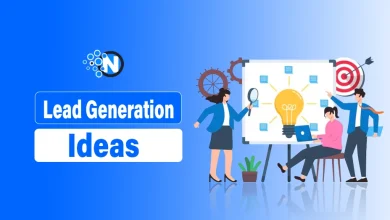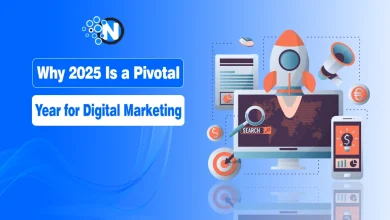How Emerging Technologies Are Changing Digital Marketing

Digital marketing isn’t what it used to be decades ago. Gone are the days when a catchy slogan and a banner ad were enough to grab the attention of the target audience. Today, emerging technologies are rewriting the rules of engagement, giving brands powerful new tools to connect with audiences in smarter, faster, and more immersive ways.
For example, 43% of marketing professionals use AI software to automate repetitive marketing tasks and processes, according to SurveyMonkey.
But how exactly are these technologies playing a role in the marketing landscape?
In this blog post, I will discuss how emerging technologies like AI, LLMs, and IoT are reshaping the marketing landscape—and what it means for businesses trying to stand out in 2026 and beyond.
How Technology is Changing Marketing
Emerging technologies are not optional extras. They are changing how audiences discover brands, how search engines interpret content, and how marketing teams measure success. Artificial intelligence, large language models, voice assistants, and visual search are shifting ranking signals from simple keyword matching to relevance, context, and user experience.
Marketers who adapt will convert attention into measurable value. Those who do not will see traffic and revenue slip away. For businesses, the choice is simple: embrace these new technology tools today or risk being left behind tomorrow.

Top Emerging Technologies in Digital Marketing
AI and Content at Scale
AI and large language models speed up research, drafting, and personalization. Use AI to generate outlines, surface related topics, and create data-driven briefs. Always pair automated drafts with human editing for accuracy and unique insight. To keep search value, ensure every AI-assisted page adds original evidence, examples, or reporting that other pages lack.
Conversational Search and Voice
Voice queries are longer and more conversational. Target question-style queries, concise answers, and FAQ sections that are schema-ready. Featured snippets and short, summarized answers increase the chance that voice assistants will read your content aloud. Structure answers so that a single, authoritative sentence appears early, followed by supporting detail.
Visual and Multimodal Search
Image recognition and multimodal search engines make high-quality imagery a ranking asset. Provide crawlable images, descriptive alt attributes, detailed captions, and image sitemaps. Use clear file names and structured metadata. For e-commerce, add multiple product angles and contextual lifestyle photos so visual search can match intent.
Performance, Privacy, and Delivery
Edge computing, server-side rendering, and optimized asset delivery improve both load times and Core Web Vitals. At the same time, cookie deprecation and privacy regulations push teams to first-party measurement and server-side analytics. Combine fast delivery with privacy-aware tracking to preserve attribution and grow reliable datasets.
A Concise SEO Playbook for the New Era (2026 and Beyond)
This SEO guide focuses on practical changes that align content, technical setup, and measurement with modern search behavior. Follow these priorities to build sustainable organic growth:
Content Strategy and E-E-A-T
Create topic clusters centered on clear user intent. Every pillar page should link to cluster pages and vice versa. Demonstrate expertise and experience using author bios, citations, case studies, and timestamps. Use the Article and Author schema so search engines can surface author information alongside content.
Writers such as Mia Green and Emma contribute timely analysis and reporting on search changes, and the broader SEO team at owdt produces ongoing coverage and guides. For fresh updates, follow the owdt tag titled SEO news.
On-page Structure and Semantic Optimization
Use a logical heading hierarchy, descriptive title tags, and intent-aligned meta descriptions. Target a primary query per page and cover closely related subtopics in H2 and H3 sections. Include short summary answers at the top of long articles to target featured snippets. Add FAQ schema for question-answer pairs and leverage table or list markup for comparison content, as those formats often appear as rich results.
Technical Fundamentals
Prioritize mobile-first design, TLS, and correct canonicalization. Fix redirect chains and eliminate duplicate content with canonical tags. Optimize images with responsive srcset, modern formats, and lazy loading. Monitor Core Web Vitals and set performance budgets for LCP, INP, and CLS. If your site relies heavily on client-side JavaScript, implement server-side rendering or dynamic rendering so crawlers receive stable HTML snapshots.
Structured Data and Knowledge Signals
Implement JSON-LD for Article, FAQ, BreadcrumbList, Product, LocalBusiness, and any other relevant schema types. Validate markup regularly with the Rich Results test. Mark up author and publisher information to strengthen trust signals. Use structured data to feed voice assistants and to enable rich SERP features that improve click-through rates.
Link Building and Reputation
Pursue high-quality, relevant backlinks through data-driven PR, partnerships, and original research. Build content that is referenceable and linkable, such as studies, tools, and long-form guides. Track referring domains and anchor diversity. React quickly to negative SEO signals and document outreach for any disavow actions.
Measurement, Testing, and Analytics
Adopt server-side tagging alongside client-side analytics to cope with signal loss. Use GA4, Search Console, and a data warehouse for query-level analysis and cohort measurement. Establish conversion-focused KPIs such as organic revenue, goal completions, and assisted conversions. Run A/B tests on meta titles, snippet content, and structured data presentations to measure CTR lift.
Governance and Risk Control
Establish editorial review workflows to fact-check AI-generated content. Maintain a content audit cadence to remove or consolidate thin pages. Store consent records and anonymize datasets as required by law. Maintain a recovery plan that includes backups of canonical mappings and a process for restoring content after scraping or an attack.
Quick Technical Checklist
- Ensure mobile responsiveness and HTTPS across the site.
- Resolve the top three Core Web Vitals issues identified by Lighthouse.
- Implement or validate JSON-LD for Article and FAQ where appropriate.
- Add or update image sitemaps and descriptive alt text for priority visuals.
- Set up server-side event recording for critical conversions.
Where to Stay Informed and Take Tactical Next Steps
Reliable, timely reporting helps teams react to search engine updates and product launches. The owdt blog is a practical resource. Writers Mia Green and Emma publish analysis and guides, and the entire SEO team at OWDT regularly shares tactical posts and experiments. Bookmark the SEO news tag to monitor algorithm changes, search feature rollouts, and case studies.
Start by auditing your highest-traffic pages, fixing core technical SEO issues, and publishing one new pillar page that demonstrates both author expertise and unique data or examples. Use AI tools to speed drafting, but require human review before publishing. Measure results with server-side analytics and iterate every 30 to 90 days.
Conclusion and Final Priorities
Emerging technologies change signals, but they do not replace fundamentals. Focus on user intent, content quality, speed, and trust. Use AI and automation to scale research and drafts, not to replace original insight. Optimize for conversational and visual search by turning answers into structured, crawlable blocks.
Maintain measurement that survives privacy changes. Finally, follow authoritative coverage such as the OWDT team, including Mia Green and Emma, to stay ahead of practical shifts. Implement these priorities, and you will build organic growth that endures as search evolves.




